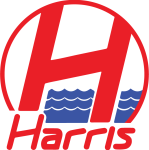Sprinklers and standpipes are two crucial fire protection systems that safeguard lives and property. A fire sprinkler system discharges water from sprinkler heads to prevent the growth and spread of fire.
A standpipe system provides water through hose connections for use by the fire department or trained personnel. Learn about four different types of combination sprinkler standpipe systems to understand ways you can improve firefighting efficiency.
Combined System
A combined system consists of sprinkler piping and a standpipe system. The system supplies the automatic sprinklers and the standpipe from one water delivery source.
A fire riser is a pipe that connects to a pressurized water source and supplies the sprinkler system with water. A combined sprinkler standpipe system often uses a combined riser to supply the sprinkler and standpipe with water. In contrast, separated systems can use separate risers that may or may not connect to each other.
Automatic Wet Standpipe
An automatic wet standpipe system automatically provides water at the required pressure and flow rate, whereas a manual system requires supplemental flow and pressure from the fire department. A wet system always keeps water in the standpipe system.
Automatic Dry Standpipe
Like an automatic wet system, an automatic dry standpipe provides automatic protection when a fire breaks out. However, a dry standpipe does not hold water. Instead, the system piping is normally filled with pressurized air. When the hose valve opens, the system fills with water.
Three Standpipe Classes
Finally, standpipe classes are another characteristic of the different types of combination sprinkler standpipe systems. Standpipe systems are categorized as Class I, II, or III based on the hose connection size and who can use the hose.
Class I systems use 2.5-inch hose connections, Class II systems use 1.5-inch hose connections, and Class III systems use both 1.5-inch and 2.5-inch hose connections. The fire department may use any of the three classes. Trained personnel may use Class II and III systems only.
Sprinklered buildings typically use a Class I system, whereas buildings that do not have a sprinkler system often have a Class II standpipe system. Consult the NYC Fire Code to understand the fire safety requirements for your building or business.
Fire Sprinkler Installation Services
Let Harris Water Main and Sewer contractors install an outside screw and yoke (OS&Y) valve on the inside of your building’s foundation wall to connect the pipe that runs from the roadway to the internal plumbing that attaches to the sprinkler heads. The OS&Y valve controls water flow into pipes for fire sprinkler and standpipe systems.
Our NYC fire sprinkler installation services will help you pass DEP inspections for new sprinkler mains. Contact us today for a free quote.




















